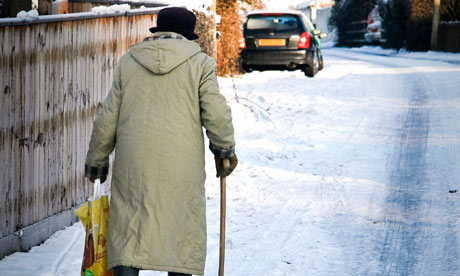
There's a reason why weather forecasters advise you not to make that journey in the snow: it's dangerous. Whether the risk is ploughing your car into other vehicles or breaking your wrist, hip or neck by walking up the road, you should know that only penguins are really designed for the snow and ice.To survive on this terrain you have to make like one. . .
● Concentration is everything. Just walk. Do not talk on your mobile phone or even reach into your pocket. Look where you are walking – icy patches may not be easy to see. Suspect all surfaces of plotting to upend you.
● Wear sturdy shoes with non-slippery soles. So, not leather soles or stilettos.
● Walk slowly and purposefully, putting your weight flatly and firmly in front of you. It's OK to be flatfooted in the snow. Do not run for anything.
● Take short steps, not long strides, lean a little forwards rather walking erect. The correct posture is more shuffling than upright, Turn your feet slightly outwards like a penguin.
● Do not put your hands in your pockets. You may need them to save yourself when you crash forwards onto the pavement. Keep your arms extended and slightly out for balancing purposes. Wear gloves to keep your hands warm and for protection if they hit the ground.
● Do not carry heavy bags, especially on your back, as they may unbalance you. If you are pregnant, you have already shifted your centre of gravity and should be tucked up at home with a box set of Mad Men.
● Keep your steps and driveways (if you have them) clear of snow as these are often the iciest patches of your journey out.
● If you do fall, relax your body – although you can try to grab the nearest person – thereby bringing them down too. If you fall backwards tuck in your chin to lift your head up so it doesn't clunk on the floor. Having a few drinks may make you more relaxed when you fall but will make you more likely to fall in the first place; the choice is yours.
● You can buy hip protectors if you are at an age where breaking your hip is more likely, but a bulky overcoat may also offer some protection from a fall.
● People who know about snow (climbers mostly) say that ice grips worn over shoes can prevent falls. Yaktrax, available from Amazon, seem to have a good write-up. A study by The American Geriatric Society found that they reduced falls. However you have to take them off on smooth indoor surfaces and they don't work on black ice because nothing does. Except being a penguin.

